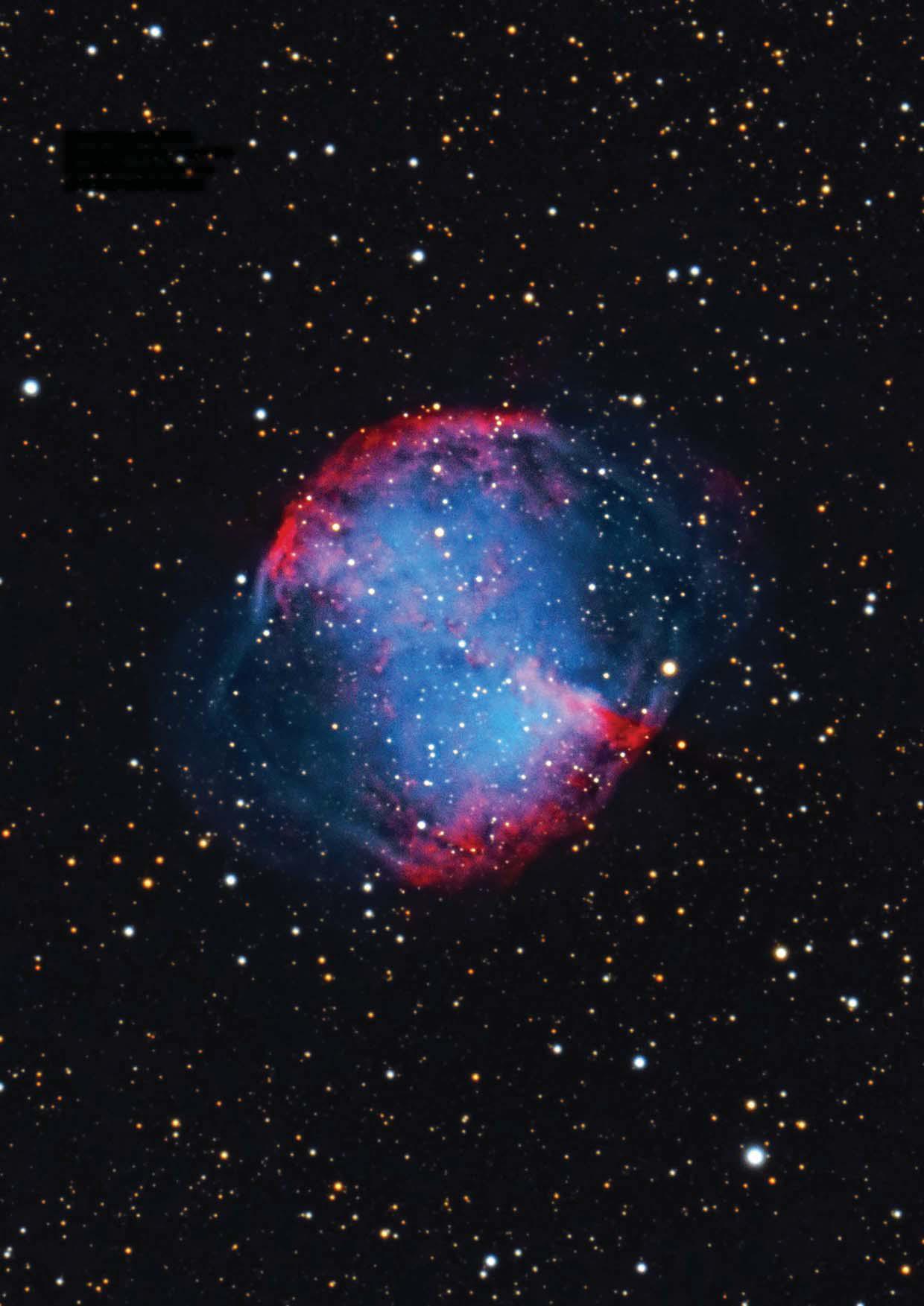A parade of PLANETARY NEBULAE
BBC Sky at Night Magazine
|August 2022
Stuart Atkinson seeks out six of the loveliest examples of these deep-sky objects for you to track down in the late-summer skies.

One of the most fascinating facts I ever learned about astronomy is that stars don't last forever: like us, they are born, live a life and eventually die. Okay, so those lives are rather longer than ours, but every single star in the sky is on borrowed time.
Thanks to science fiction, a common misconception is that all stars die in cataclysmic explosions, like the Death Star. The largest do, becoming supernovae that can briefly outshine a whole galaxy, while the smallest ones just shrink and fade away, like forgotten pop stars. In between, the quieter, less attention-seeking stars the size of our own Sun - that is, with diameters of a million kilometres or so - die like celestial souffles, swelling up and then shrinking again; but not before they pop, puff off their outer layers like colourful smoke rings and surround themselves with beautiful shells of gas and dust. Because through the eyepiece these shells have a resemblance to planets, they are known as planetary nebulae'.
Planetary nebulae are important scientifically because they allow us to study the evolutionary processes of stars similar to our own Sun, and see into its future. By studying them at different wavelengths, we can explore the amount and composition of the dust and gas inside their shells, allowing us to understand better what stars are made of. It's even possible to watch the material inside a planetary nebula's shells expanding, by taking multiple images over long periods of time and comparing them. We won't be around to see what happens to the Sun as it nears the end of its life, but studying planetary nebulae allows us to jump in a TARDIS and travel into the future to do just that.

Keep it dark
Esta historia es de la edición August 2022 de BBC Sky at Night Magazine.
Suscríbete a Magzter GOLD para acceder a miles de historias premium seleccionadas y a más de 9000 revistas y periódicos.
¿Ya eres suscriptor? Iniciar sesión
MÁS HISTORIAS DE BBC Sky at Night Magazine

BBC Sky at Night Magazine
MOONWATCH
January's top lunar feature to observe
2 mins
January 2026

BBC Sky at Night Magazine
Speed up your processing workflow
How to use Photoshop's Actions tool to drastically cut your processing time
3 mins
January 2026

BBC Sky at Night Magazine
Chasing Canada's polar lights
With solar maximum peaking and a new Moon promising dark skies, Jamie Carter travels to Churchill, Manitoba to hunt the Northern Lights - and dodge polar bears – in Canada's far north
7 mins
January 2026

BBC Sky at Night Magazine
Beyond Pluto: The search for the hidden planets
Could one – or even two - undiscovered planets lurk at the edges of our Solar System? Nicky Jenner explores how close we are to finding the elusive 'Planet 9'
6 mins
January 2026

BBC Sky at Night Magazine
Jupiter moon events
Jupiter is a magnificent planet to observe.
2 mins
January 2026

BBC Sky at Night Magazine
What samples from space have taught us
Alastair Gunn explains what scientists have learnt in the 20 years since the first unmanned mission brought materials back from alien worlds
3 mins
January 2026

BBC Sky at Night Magazine
The Milky Way as you've never seen it before
This is the largest low-frequency radio colour image of our Galaxy ever assembled
1 min
January 2026

BBC Sky at Night Magazine
Merger of ‘impossibly' massive black holes explained
Scientists discover how enormous, fast-spinning black holes can exist after all
1 mins
January 2026

BBC Sky at Night Magazine
Lunar occultation of the Pleiades
BEST TIME TO SEE: 27 January from 20:30 UT
1 min
January 2026

BBC Sky at Night Magazine
The Universe's expansion may be slowing down
New study suggests current theories of dark energy could be wrong
1 mins
January 2026
Translate
Change font size

